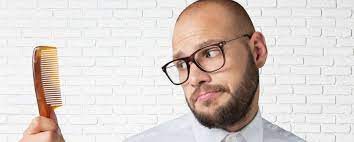Balding in men is a common problem that affects people of all races and ethnicities. There are several ways to deal with this problem. While many of us going bald at 20 and try to ignore it and focus on fashion and fitness, others choose to avoid mirrors and simply accept the changes up top. While some of these strategies may reduce the stress associated with the problem, others may only make the situation worse. In either case, it is vital to accept balding as a part of your appearance, and not try to hide it.
Male pattern baldness affects all races and ethnicities
Male pattern baldness affects approximately two-thirds of all males at some point in their lives. In the United Kingdom alone, 7.4 million men are experiencing hair loss. It is highly distressing and can be a sign of a serious health condition. While baldness affects most white men, it is also very common among Asian and Afro-Caribbean men. Native Americans, on the other hand, are not affected by male pattern baldness.
Though male pattern baldness is highly prevalent among Europeans and Scandinavians, people of all races and ethnicities are affected. Iranians are particularly affected. Almost 40% of Iranian men suffer from this disease, which is an alarming statistic. Some genetic differences may contribute to this difference, but there is no one single race or ethnic group that is completely protected from it.
Male pattern baldness affects over 50 million men worldwide, and the condition is genetic. It usually develops over time as men change their hormone levels. It is a psychologically distressing condition, and a male who suddenly starts losing his hair should be evaluated by a medical professional.
High risk of prostate cancer
Although there’s no evidence that supplements reduce the risk of prostate cancer, eating foods rich in vitamins can help your body keep healthy levels of these nutrients. Getting exercise is also an important part of maintaining overall health. Physical activity helps control weight and improves mood. Start slowly and gradually increase the amount of time you spend working out.
Researchers have found that prostate cancer is more likely to develop in men with early balding than in those with no balding. However, it’s unclear what factors may be responsible for this. One factor is family history of the disease. Another factor is premature baldness. Many young men do not consult their doctors, and they’re not likely to start getting their prostate checked until they’re 40 or 50.
This study found that men who begin losing their hair in their 20s have a higher risk of developing prostate cancer than men who start losing their hair later in life. However, the same study found that men who go bald later on, including those with thinning hair and male-pattern baldness, are not at a higher risk.
Hair transplants
Hair transplant surgery is a surgical procedure that adds hair to the balding areas. The surgeon takes hair from a donor area, usually the side or back of the head, and grafts it to the balding areas. The procedure is not permanent, and the result depends on the quality of the donor hair. The procedure can take up to nine months before you see a full head of hair again.
A patient should consult a physician to get a clear understanding of the possible complications and risks of the procedure. Patients who smoke are at a higher risk of complications. They should quit smoking before undergoing hair transplant surgery. If they cannot quit, they should consult with an ethical surgeon. They may also need ongoing medical treatment following the procedure.
Conclusion
Hair transplants for young balding can have permanent results of regrow hair if the transplant is done early in the process. The procedure is a life-changing decision and should be thoroughly considered.
If you want to avoid balding in your youth, there are several things you can do to protect your hair. First of all, try to avoid pulling too hard on your hair shafts. For instance, avoid tight ponytails that pull out hair from the front of your hairline. Also, avoid using harsh products that can damage your hair and scalp.

